In February this year, Brompton announced it will be building a new factory at Ashford in Kent, which is expected to open in 2027.
Brompton is currently the largest manufacturer of bikes in the UK, producing roughly 80,000 per year across its current factory in Greenford, west London, and its specialist titanium facility in Sheffield, in the north of England.
The new factory in Ashford will increase production capacity to approximately 200,000 bikes per year, with staff numbers rising from 850 to 1,500.
The project isn’t just about upping the scale of production, however. Speaking to BikeRadar, Will Butler-Adams, Brompton’s chief executive, is keen to express that Brompton’s vision is much larger than that.
“We want to deliver something that redefines the perception of manufacturing,” he says.
Brompton hopes the factory will change the image of manufacturing away from a remote industry to one more entwined with the local community and ready to find solutions to the world’s problems.
Designed by Kent and London-based architecture practice Hollaway studio, and in collaboration with Ashford Borough Council, which will provide financial support, the round factory building will stand on stilts in a 100-acre floodplain next to Ashford’s retail park. Sixty acres of the floodplain will remain untouched and rewilded into a public nature reserve, with the aim of increasing biodiversity in the process.
The plan, for Butler-Adams, also has a great deal to do with the role he sees Brompton playing in the future from educating consumers to helping reduce emissions through sustainable transport.
Why build a factory in Ashford?
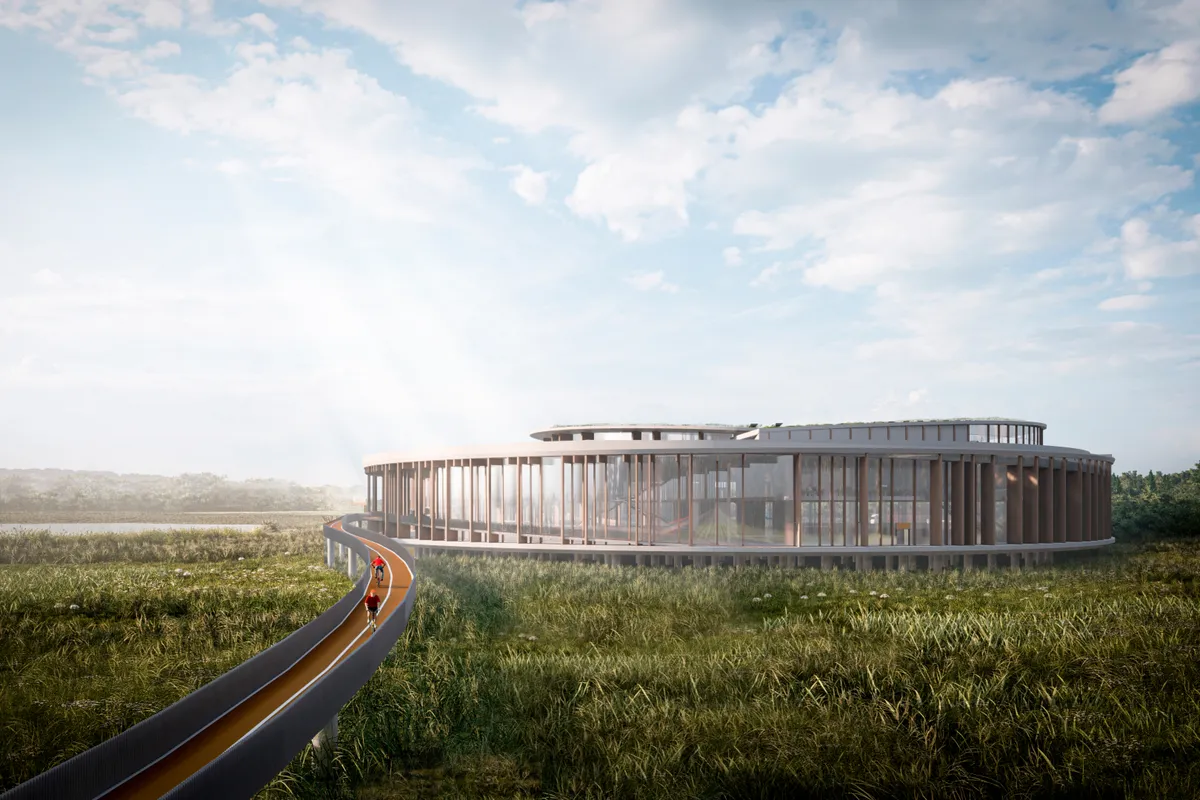
Brompton moved into its current factory in Greenford six years ago. According to Butler-Adams, the building “was basically an empty grey box” originally intended for logistics rather than manufacturing.
As a result, Brompton has spent close to £5 million over six years making the building suitable for its needs, from upping power supply capacity to installing extraction and developing research facilities.
Over this time, Brompton has also expanded to take on six units on the site, and Butler-Adams says the company has effectively already outgrown the location.
Part of the reason for finding a new site was to ensure Brompton has enough space to grow in the future, Butler-Adams says.
He points to Frank Williams, founder of the Williams Formula 1 team, who Brompton has collaborated with in the past, as an example of someone who got this right.
“Frank Williams was very smart,” Butler-Adams explains. “He bought a plot of land outside Oxford that was way too big. But over the last 30 to 40 years he’s built out. And that is phenomenal because [while] you might not know what’s going to happen with a business, if you do need to grow, it’s right there.”
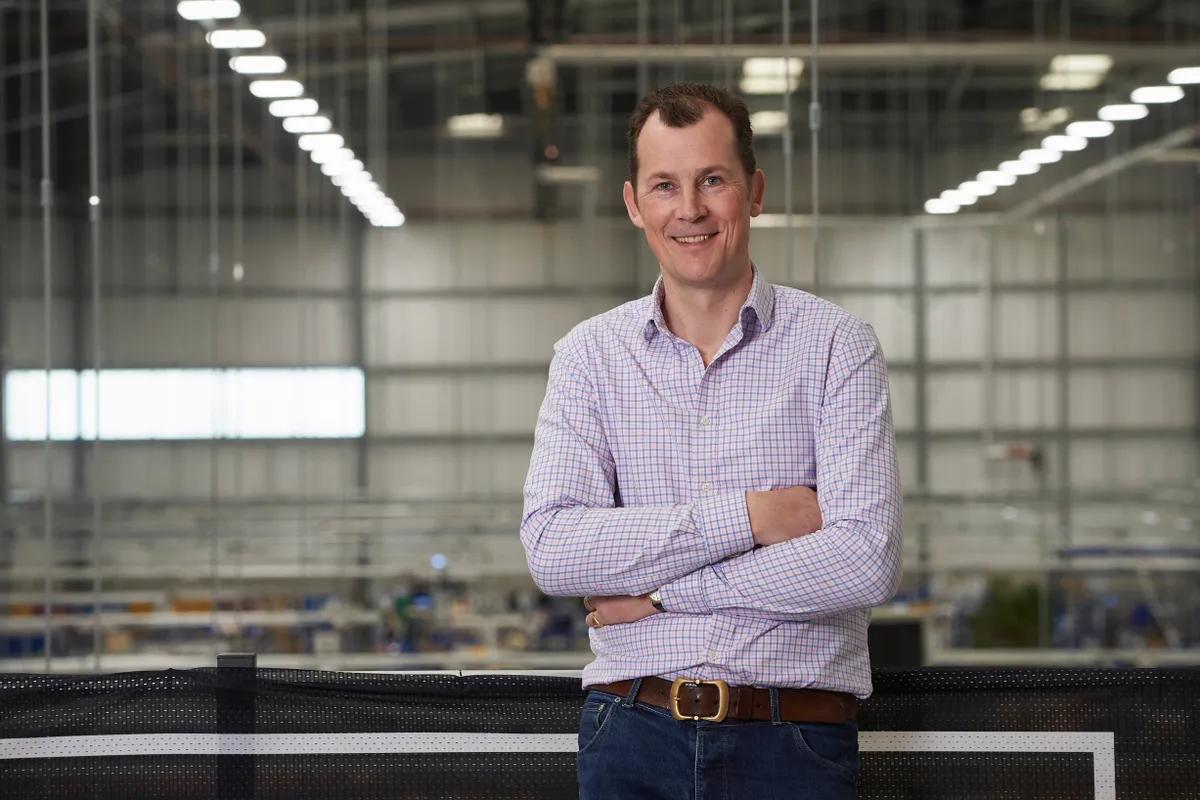
Butler-Adams says that despite having looked across the whole country for a new location, being close to London was ultimately paramount. This is because the brand creates a product designed specifically for use in cities and having a workforce that can commute to work using a Brompton will help the brand refine its product further, according to Butler-Adams.
The problem, however, with trying to secure a location near London is space is in high demand – and cost.
“We moved into Greenford on £11 a square foot. The most recent space we’ve taken is £30 a square foot,” Butler-Adams says.
The fact that real estate in and around London is expensive will come as a shock to few. But Butler-Adams says the problem has become even more acute since Covid. The demand for grey logistics spaces near cities has increased as people have relied more on online shopping and delivery, he says.
Ashford wasn’t initially on Brompton’s radar as a possible location, but proximity to London and the local council's enthusiasm both increased its draw.
Brompton was initially offered a traditional industrial space. This was eventually bought by the UK government to be a lorry park to deal with the overflow of customs checks caused by Brexit. In any case though, Butler-Adams thought the site was boring and wasn’t in line with Brompton’s ambitions.
Guy Hollaway, principal partner at architectural practice Hollaway Studio, suggested the floodplain site and Butler-Adams felt it matched Brompton’s desire to have a park around its site and be part of a community.
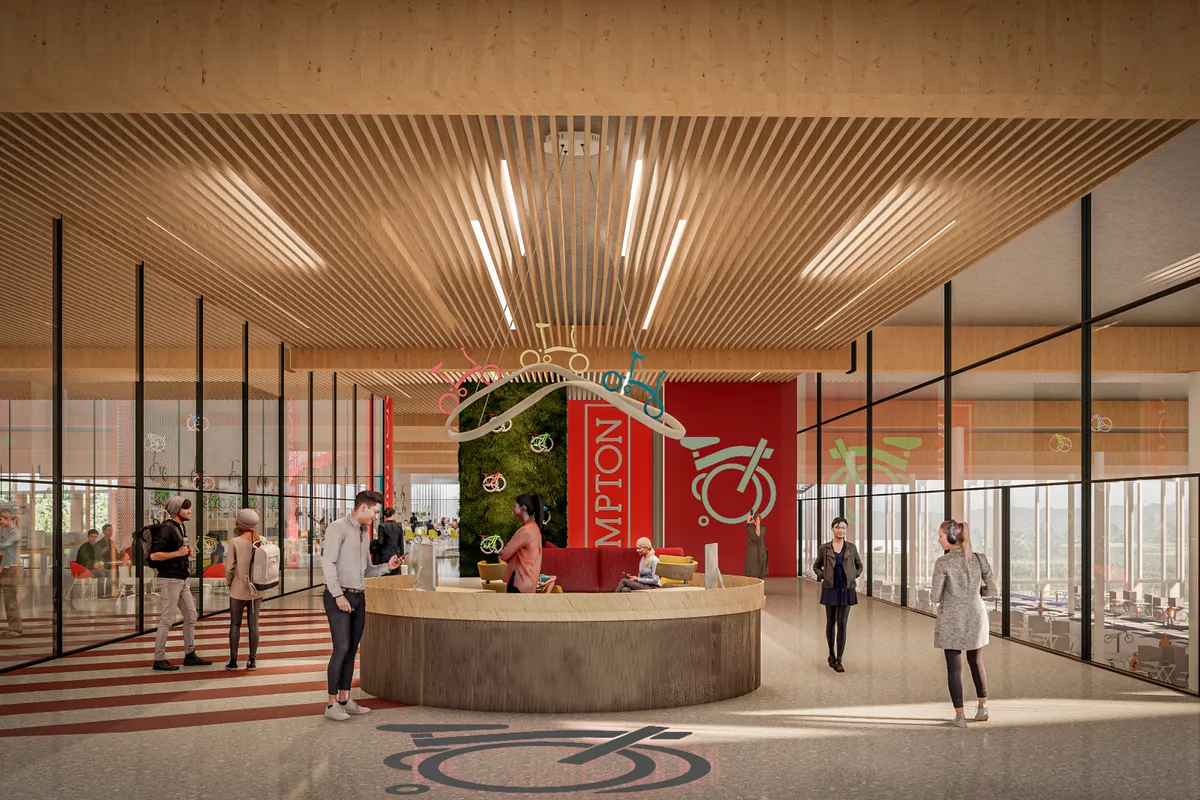
Alongside creating a nature reserve and developing a park with trails and cycle paths for the public, there will be enough space at the site to ensure Frank Williams-style growth can take place. This will allow Brompton to expand without having to find another site in the coming decades.
The initial factory will take up 200,000 square feet but Butler-Adams says Brompton has put in planning outlines for up to 500,000 square feet.
The factory itself will be open to the general public with a cafe, museum and visitor centre. This will potentially help integrate Brompton into the community, but will also serve another purpose.
“My belief is we have a serious problem with our environment and we need to consume less,” he explains.
By drawing people from the neighbouring retail park into the building, where they will be able to see into the factory itself, Butler-Adams hopes to help change people’s attitudes toward what they consume.
“If we can drag some of them who are getting a bit bored with a fifth shop to come and see stuff being made, and tell our story about maybe buying a bit less,” Butler-Adams says, “that’s really important to us.”
The difficulty of hitting net-zero
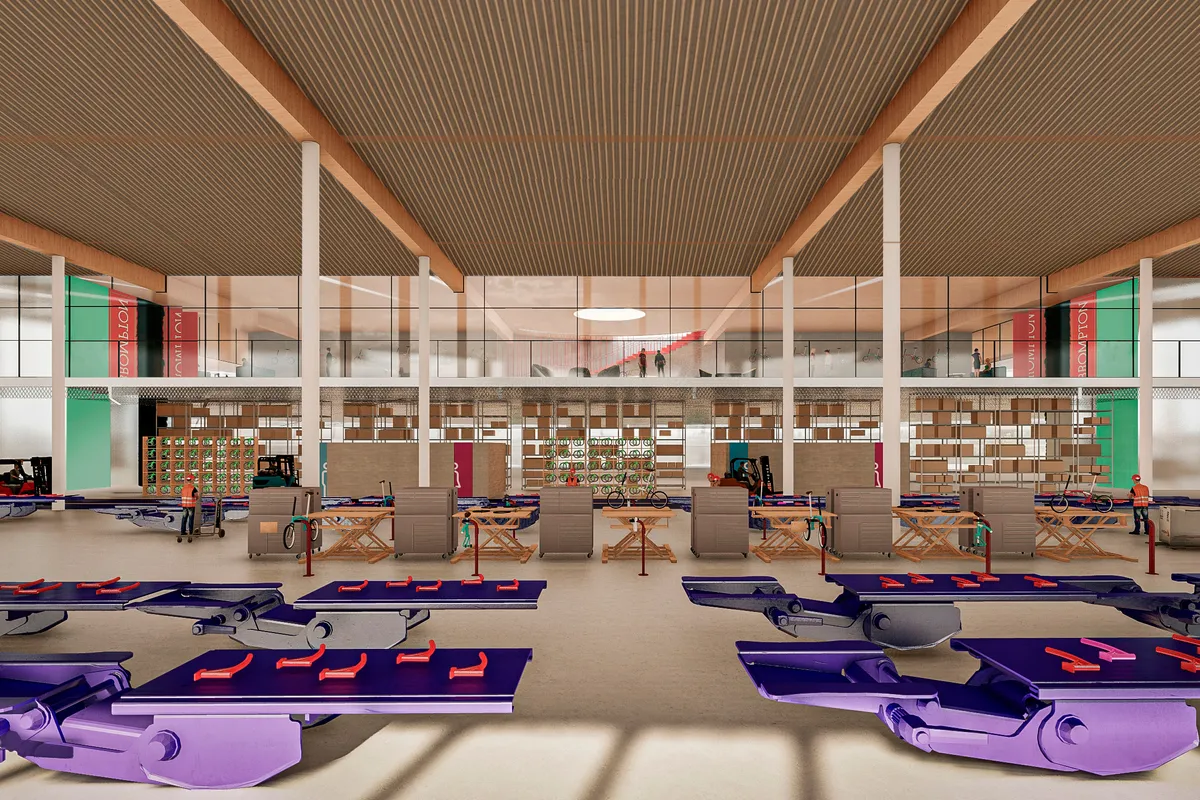
Calling for people to change what and how much they buy for the sake of the environment, while simultaneously announcing your business will potentially increase production by more than double, might strike some as contradictory. It could be argued that this responsibility should fall on the manufacturer, rather than the consumer.
But Brompton says it is taking steps to be more sustainable and reduce emissions. A press release from the company said the amount of embodied carbon in the new factory will be minimised and the development will “support Brompton in delivering 1.5°C-aligned emission reduction targets as part of Net Zero ambitions.”
Butler-Adams echoes these sustainability and emissions reduction aims, saying the brand is “going to try and be smart.”
He cites as an example of this the integration of ground-sourced heating and cooling into the pylons the factory building will be built upon.
The massive roof of the factory will also be fitted with photovoltaic solar cells, helping Brompton produce its own green electricity.
The factory will also have no new car parking. Instead, it will only be accessible via foot and pedal power.
However, Butler-Adams is under no illusions about the significant energy consumption of the new factory.
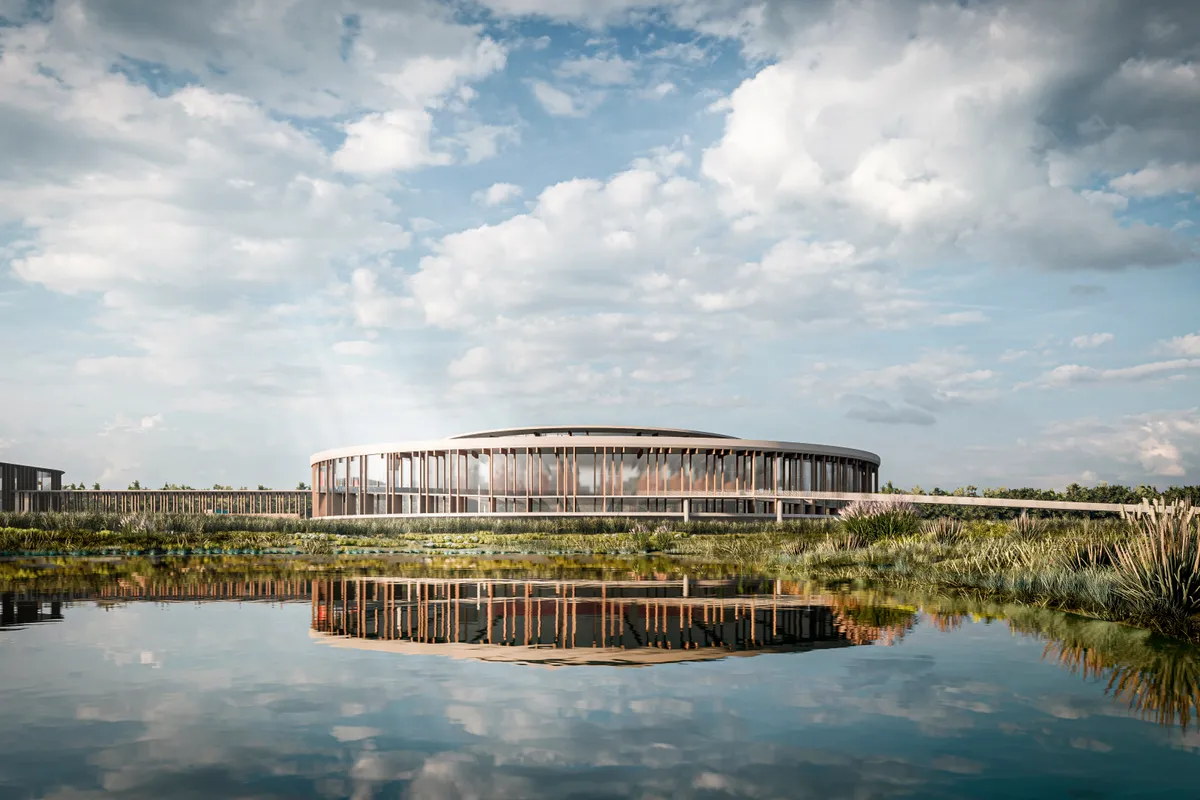
“The first thing that’s going to happen at Brompton is we are not going to reduce emissions – if you’re being truthful – because we’re trying to grow,” he says.
Butler-Adams is confident that the emissions per bike will drop, but Brompton will not be able to cut its overall carbon footprint if it is increasing the number of bikes it produces at the same time. This, he says, is where factory work differs from other industries.
“That building will not be net-zero. It would generate power if all we did was go in and fiddle around on computers all day. But if you’re talking about robots, CNC machines, annealing of materials, paint plants, forget it.”
This hasn’t stopped Brompton from signing the Shift Cycling Culture’s Climate Commitment letter, which includes the commitment to reduce C02 emissions by 55 per cent by 2030, among others.
But Butler-Adams says he signs such commitments to force the conversation around environmental responsibility and bring the conversation to the board level, even if he believes “we haven’t got a cat in hell's chance of delivering net-zero in this industry.”
When it comes to cutting emissions Butler-Adams says the biggest problem in its current bikes is the steel, and he isn’t hopeful we will see green steel in the immediate future.
“That is a massive, industrial, heavy industry. It’s going to take 15 to 20 years to turn it around,” he says.
Scale that problem up to industries significantly larger than cycling, such as construction, which consumes the majority of the world’s steel, and if Butler-Adams is to be believed, it’s hard to feel hopeful.
After all, cycling is just as enmeshed in global supply chains and resource extraction as any other industry, regardless of its comparatively small size. So if steel is a stumbling block for cycling, what chance do other manufacturing industries face?
'Cities need to change'
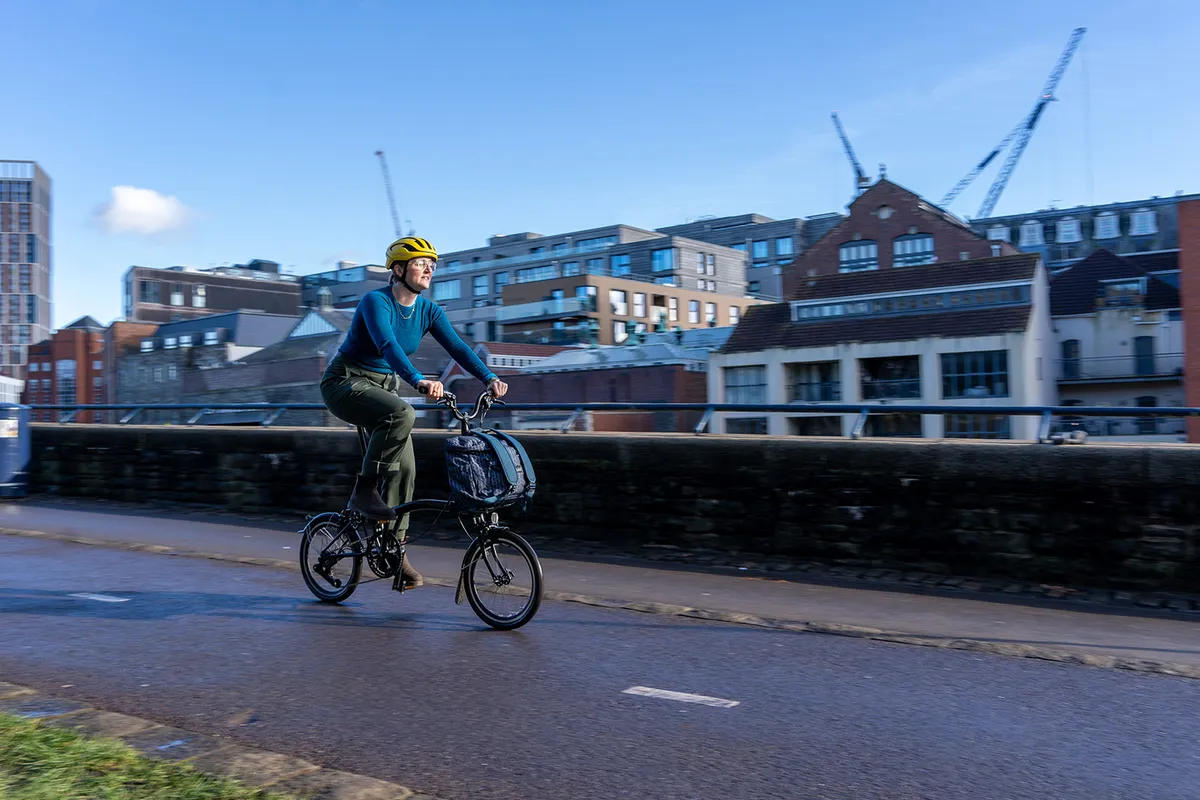
Butler-Adams is conscious of the role bicycles – which have the lowest carbon footprint of any mode of transport – can play in reducing emissions.
“What we are trying to do is move people out of cars and move people out of motor transport, onto a far more efficient mode of transport. So the product itself has a role to play in diminishing the carbon footprint and ongoing emissions from other forms of transport,” he says.
Butler-Adams sees Brompton’s main job as developing the products that enable a change in how people travel. But the brand’s Campaign for Movement, launched in 2019, was intended to show the potential of cycling to help solve issues from pollution to wellbeing, a sentiment shared by many including Chris Boardman at COP26.
Butler-Adams says one of the areas Brompton wants to work on is street parking. Like the problem of where to place a factory, he sees this issue in terms of space and its cost.
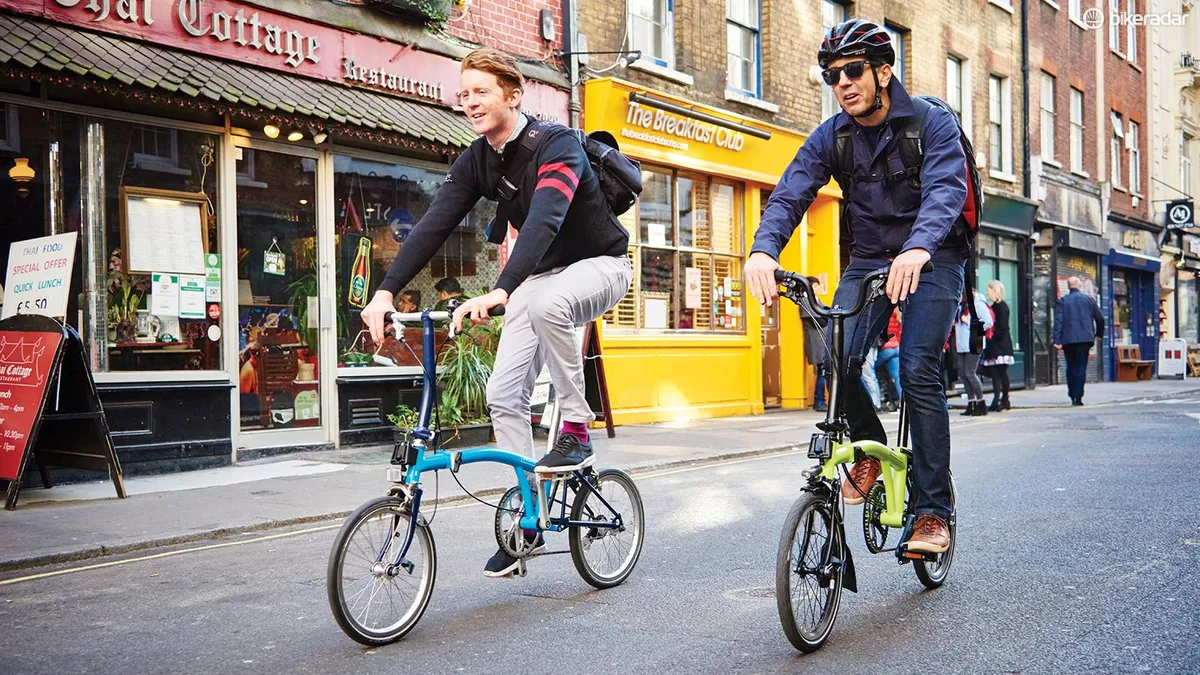
“For some reason, in the last 50 years, car owners believe they have a right to park their car for free in the public realm”, he says, explaining that this is at odds with how precious a commodity space in a city is.
“Having a metal box, electric or non-electric, rusting, and taking up precious space, which is community space, is outrageous,” he says.
While Butler-Adams by no means thinks urban space should be used solely for cycling, he does see the prevalence of cars in cities and drivers’ assumed right to space as things that need to change.
“If you want a car, you ought to be responsible for where it lives and it should not take precious space away from the community that lives there.”
An enormous journey
We’ll have to wait and see whether Brompton begins trying to tackle the use of urban space and community. In the meantime, the new factory offers one vision of what ‘community’ in the eyes of Butler-Adams can be.
It also expresses Brompton’s vision for how manufacturing can play a role in the climate crisis, at least in terms of raising awareness. But Butler-Adams’ assertion that the cycling industry hasn’t a cat in hell's chance of reaching net-zero might knock the optimism off this vision.
Do Butler-Adams’ comments fall into a familiar pattern of cycling companies asserting the green credentials of their products over actually tackling the issues at the point of production? Possibly. Assessing whether the increased emissions of Brompton will be offset by more people trading cars for its bikes will have to be left to more capable hands.
But at least the frankness is a starting point from which to move forward, something Brompton’s CEO is keen to do.
“There are lots of things we’re doing, but we’ve still got an enormous, enormous journey,” he says.
